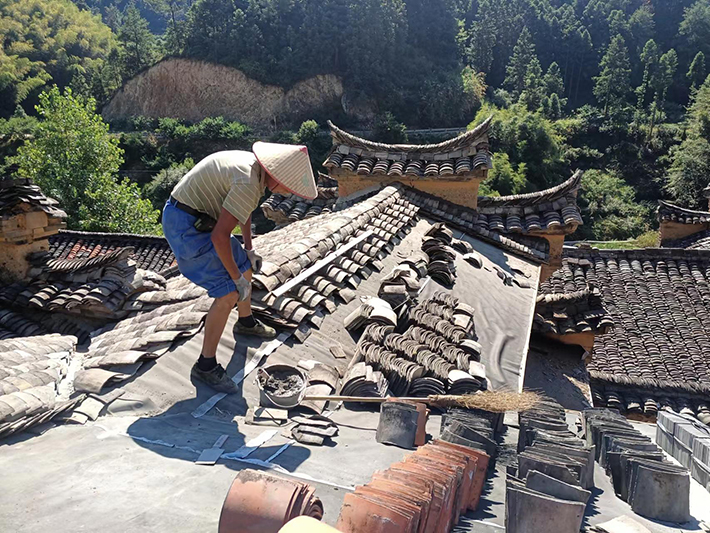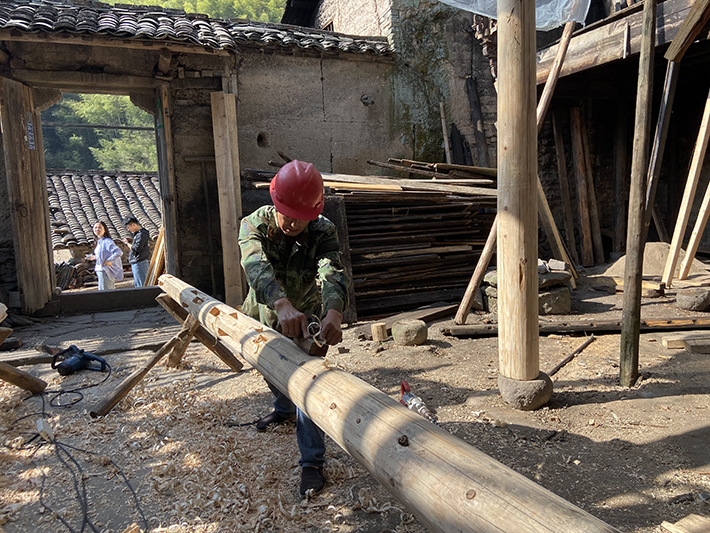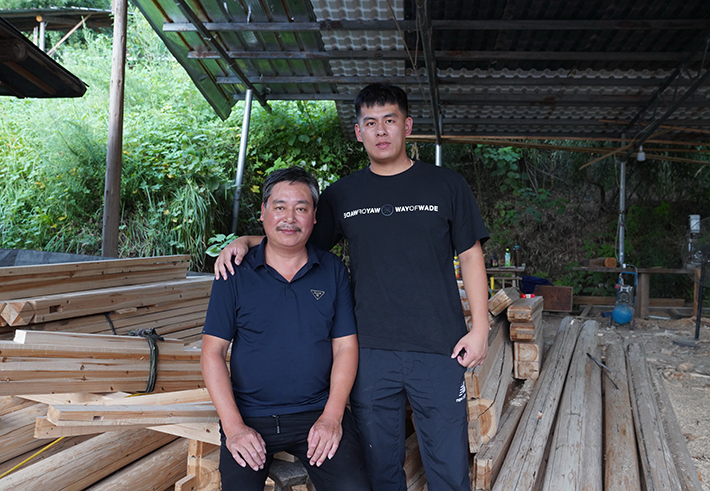|
||||||||||
| Home Nation World Business Opinion Lifestyle ChinAfrica Multimedia Columnists Documents Special Reports |
|
||||||||||
| Home Nation World Business Opinion Lifestyle ChinAfrica Multimedia Columnists Documents Special Reports |
| ChinAfrica |
| Old Skills Get New Life |
| Traditional craftsmanship takes centre stage as villages seek to restore ancient buildings |
| By Xia Yuanyuan | VOL. 16 March 2024 ·2024-03-19 |

He has been involved in the restoration of more than 160 old buildings since 2016 when the county began a programme to restore ancient buildings. “I never imagined that these old skills of mine would be of great use,” he said.
The old buildings scattered in local villages make up Songyang’s unique rural landscape. Most of them were built one or two centuries ago and have significant cultural value, although they are not classified as high-level cultural relics. Over time, many of these old buildings have fallen into disrepair.
Restoring ancient buildings requires craftspeople to have not only exceptional skills but also a deep understanding of local culture. They must choose different restoration methods based on factors such as the value of each building, the cultural environment, and its historical significance.
“We have found that the villagers have the strongest attachment to their communities, and it is the local carpenters who are most familiar with the structure of the old buildings,” said Ye Maosong, deputy director of the county’s bureau in charge of renovating ancient villages and buildings.
For the programme, Songyang has formed more than 30 traditional craftspeople teams. More than 1,000 traditional craftspeople have participated in various projects.
Reviving old skills
In Songyang, buildings were traditionally constructed with local materials, and the wisdom and craftsmanship of carpenters were crucial. As a result, carpentry was once among the most sought-after professions in the region.
Ye Changxian began learning his craft at the age of 16, apprenticing to a carpenter and becoming a journeyman three years later. Since the 1990s, however, rammed earth walls and cedar roofs have gradually given way to reinforced concrete. His carpentry skills became obsolete and he had to turn to another profession. It wasn’t until 2008, with the rise of rural tourism and the growing popularity of traditional rural dwellings among tourists, that skilled carpenters like Ye Changxian were once again in demand. He decided to pick up his old craft and later formed a team of more than 30 craftspeople to participate in the old building restoration programme.
To make the participating craftspeople more professional and deepen their understanding of ancient architecture, Songyang organised a range of training programmes in 2016. They invited heritage conservation experts from all over the province and even the nation to teach. More than 600 craftspeople from various trades, including carpentry, carving, masonry, and stonemasonry, attended the training.

A carpenter at work in Songyang County, Lishui City, Zhejiang Province (SONGYANG MUSEUM)
Nostalgic notes
“During the restoration work, we are careful not to replace anything that can be repaired and to pre serve the original components as much as possible,” said Ye Changxian. The defining elements of Songyang’s rural dwellings, such as rammed earth walls, wooden frames, green tiles, horsehead walls, and stone foundations, are preserved. They avoid making arbitrary changes to the original appearance of each building while ensuring that the restored ones are habitable. These are the principles they follow in their restoration work.
For Ye Changxian, the most challenging aspect of restoring ancient buildings is maintaining authenticity. To ensure that the original appearance remains unchanged, even the smallest details, such as the size of a window frame or the roof tiles, must meet extremely strict requirements. Craftspeople sometimes spend up to 10 days traveling dozens of miles to nearby villages in search of suitable old roof tiles. Components that have been replaced due to decay or other reasons are carefully preserved for future use.
However, the practice of preserving as much as possible initially met with resistance from the villagers. Many villagers wanted to see their old homes renovated and felt the approach was irresponsible.
Ye and his team convinced the villagers through their actions. Without changing the basic elements that define the buildings, they added waterproof layers to the roof and installed plumbing, electrical facilities, kitchens, and bathrooms, improving the overall comfort of the old buildings. “We preserved the memories of the old buildings while improving the living conditions of the residents,” Zeng said.
Passing the baton
The average age of the craftspeople in Ye Changxian’s team is over 50, and the youngest one is his 27-year-old son. “There are very few young people learning this trade these days. It’s a tough profession, and it takes two to three years to master it,” he said.
Since the Ming Dynasty (1368-1644), Songyang has been known as the home of skilled builders. In recent years, the local craft has been on the verge of extinction. After the launch of the old building restoration programme, traditional craftspeople of various professions, including carpenters, bricklayers, and bamboo weavers, have decided to return to their hometown. However, challenges such as a shortage of skilled technicians and a lack of successors remain.
To address these challenges, the county government has established the Songyang Craftspeople Talent Pool, which accepts a significant number of selected trainees each year. These craftspeople receive certificates after training. Currently, there are 263 people certified as trained heritage conservation professionals, representing the county’s initial success in building a talent pool of craftspeople and establishing the reputation of Songyang craftspeople.
In 2021, the county’s vocational secondary school began offering a civil engineering major specialising in the restoration and reproduction of ancient buildings.
As an experienced craftsman, Ye Changxian has been hired to teach the skills of restoring ancient buildings. He visits the school every week to teach more than 40 students. “I hope the old craft can be passed on to the next generation and then generations to come,” he said.

Ye Changxian and his 27-year-old son Ye Yanjie in Songyang County, Lishui City, Zhejiang Province (YU XIANGJUN)
| About Us | Contact Us | Advertise with Us | Subscribe |
| Copyright Beijing Review All rights reserved 京ICP备08005356号-5 京公网安备110102005860号 |